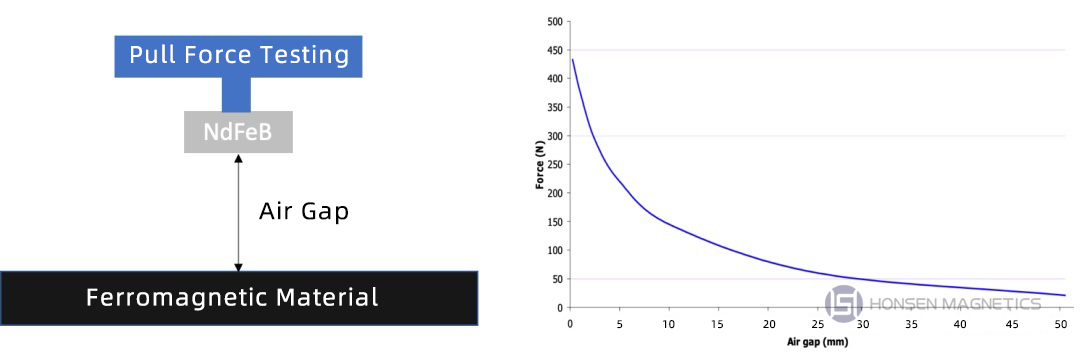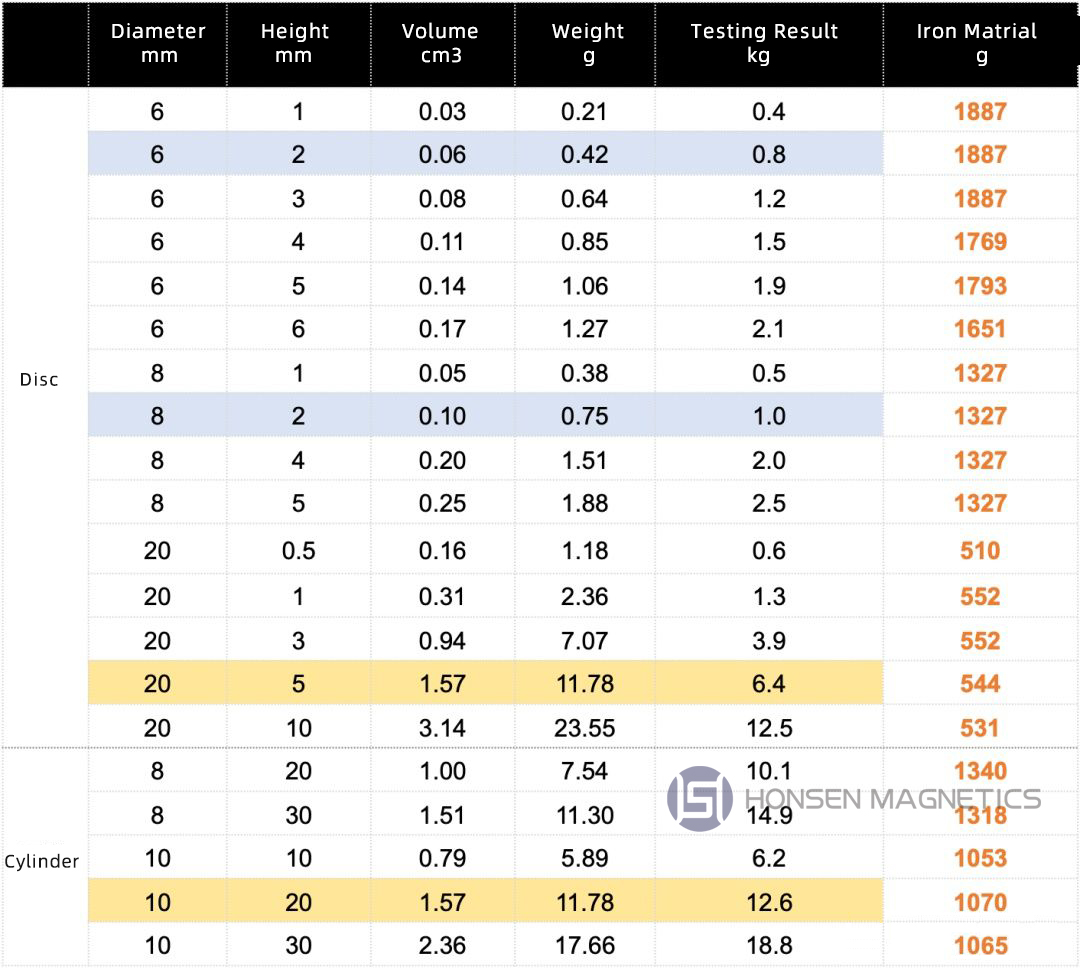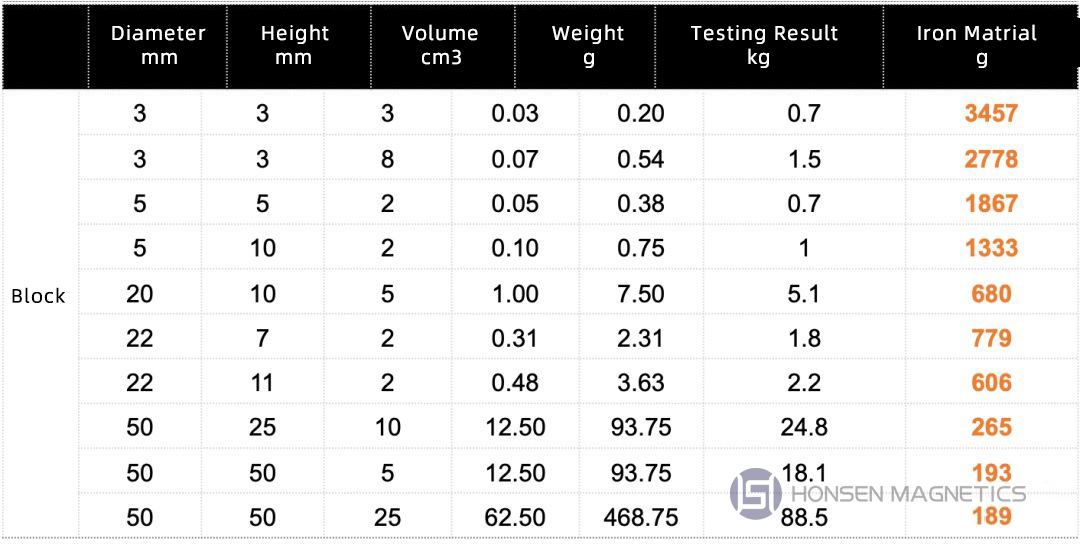How big the pulling force does a magnet have? Some people think NdFeB magnets can pull objects with 600 times as its own weight. Is this exactly? Is there a calculation formula for magnet suction? Today, let's talk about the "Pulling Force" of magnets.
In the application of magnets, magnetic flux or magnetic flux density is very important index to measure the performance (especially in motors). However, in some application fields, such as magnetic separation and magnetic fishing, magnetic flux is not an effective measure of separation or suction effect, and magnetic pulling force is a more effective index.

The pulling force of magnet refers to the weight of ferromagnetic material that can be attracted by the magnet. It is jointly affected by the performance, shape, size and attraction distance of the magnet. There is no mathematical formula to calculate the attraction of a magnet, but we can measure the magnetic attraction value through the magnetic attraction measuring device (generally measure the magnet tension and convert it to weight), as shown in the following figure. The pulling force of the magnet will gradually decrease with the increase of the distance of the attraction object.

If you search for magnetic force calculation on Google, many websites will write "according to experience, the magnetic force of NdFeB magnet is about 600 times as its own weight (640 times also written)". Whether this experience is right or not, we will know through experiments.
Sintered NdFeB n42 magnets with different shapes and sizes were selected in the experiment. The surface coating was NiCuNi, which was magnetized through the height direction. The maximum tensile force (N pole) of each magnet was measured and converted into the attraction weight. The measurement results are as follows:


It is not difficult to find from the measurement results:
- The ratio of the weight that magnets of different shapes and sizes can attract to their own weight varies greatly. Some are less than 200 times, some are more than 500 times, and some can reach more than 3000 times. Therefore, the 600 times written on the Internet is not completely correct
- For a Cylinder or Disc Magnet with the same diameter, the higher the height, the greater the weight it can attract, and the magnetic force is basically proportional to the height
- For a Cylinder or Disc Magnet of the same height (blue cell), the larger the diameter, the greater the weight it can attract, and the magnetic force is basically proportional to the diameter
- The diameter and height of a Cylinder or Disc Magnet (yellow cell) with the same volume and weight are different, and the weight that can be attracted varies greatly. Generally, the longer the orientation direction of the magnet, the greater the suction
- For magnets with the same volume, the magnetic force is not necessarily equal. According to different shapes, the magnetic force may vary greatly. Conversely, similarly, magnets that attract the same weight of ferromagnetic materials may have different shapes, volumes and weights
- No matter which kind of shapes, the length of the orientation direction plays the largest role in determining the magnetic force.
The above is the pulling force test for magnets of the same grade. How about the pulling force for difference magnets of different grade? We will test and compare later.
Post time: May-11-2022



